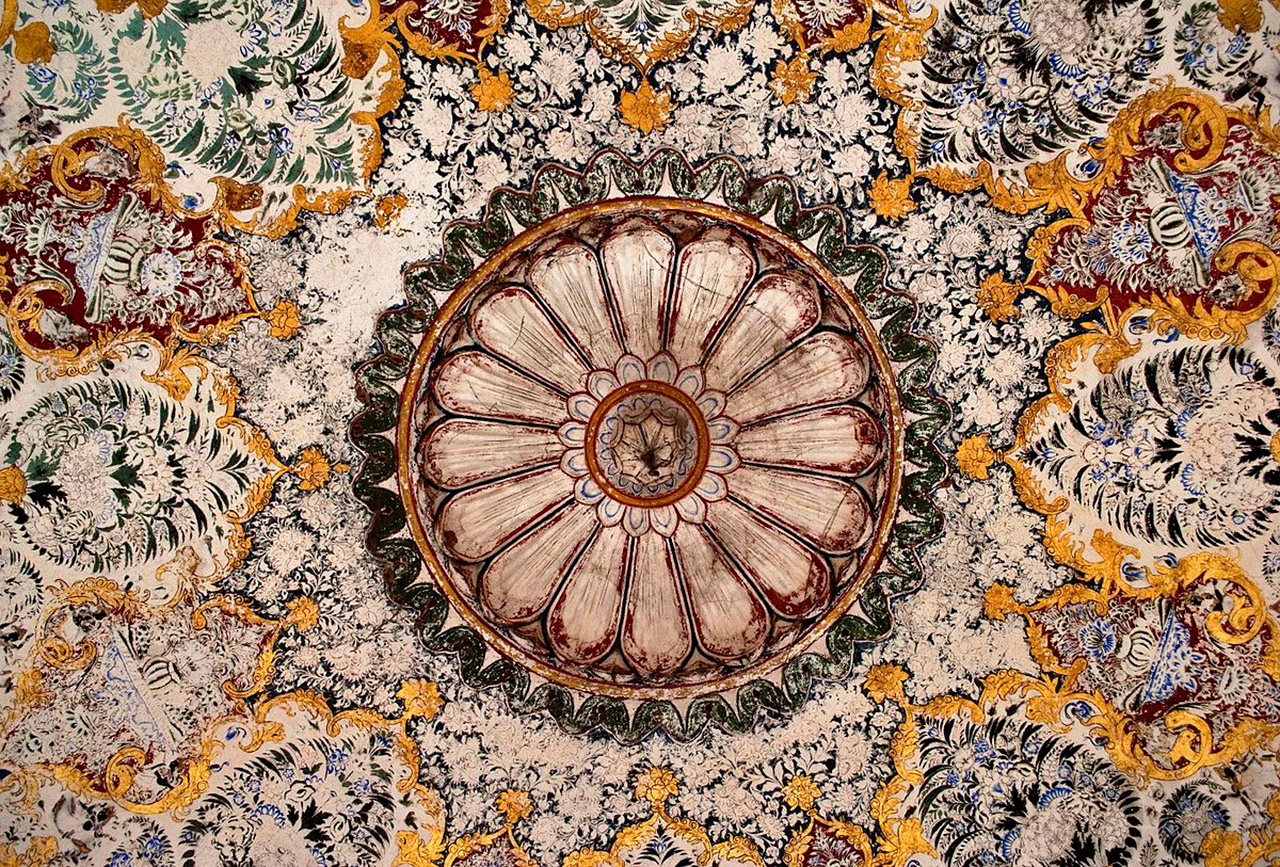
Meenakari or Minakari painting is known as the art and process of painting or embellishing the various types of metals like gold, silver, etc. This is done with vibrant colors in spectacular designs, patterns, and themes of flowers, leaves, and birds. It is also the practice of painting metal surfaces and ceramic tiles through enameling, an old and broadly accepted technology that is mainly used in jewelry and decorative art. In ancient times, enameling was only done on gold whereas now, it is also done on other metals like silver and copper. Meenakari, the ancient and intricate art form is considered to be one of the most complicated and complex metal decorations which require an immense amount of commitment, enthusiasm, dedication, skill, precision, and accuracy. The artisans who practice this Meenakari art form are called ‘Meenakars’.
History of Meenakari Paintings

This traditional art form of Meenakari involves the process of painting metal surfaces and ceramic tiles through the method of enameling. It was first originated in Safavid Iran or Safavid Persia which was one of the greatest Iranian empires. The art form is practiced and commercially produced primarily and largely in Iran, Afghanistan, Pakistan, and India. Meenakari work was originated in Persia and created by Iranian craftsmen. It was widely accepted by Greeks, Chinese, Russian as well as Mughals. The art form was unknown and unfamiliar to India but was later introduced by the Mughals.
The Meenakari art form is however often linked to the lively state of Rajasthan in India. This is because of Raja Man Singh of Amber (Jaipur), the man who found the technique and brought Meenakari to Rajasthan around the 16th century. He invited skilled, Persian meenakars from the court of Mughals in Lahore to Rajasthan and established them in Jaipur. They gave the Meenakari art an Indian flavor with a clear and definite look. This is why, today, meenakars from Jaipur are renowned for their production and Jaipur is the hub and the heart of Meenakari work in India with Rajasthan being the capital of the Meenakari trade in the country. Soon, the Meenakari art form started spreading across the country to the other parts of the Mughal Empire. This included Delhi, Punjab, and Lucknow and every area started having its technique and style.
‘Meenakari’ is derived from Meena, the feminine form of the Persian word Minoo. It means heaven or paradise, and Kari meaning to do or put something onto something else. Thus, the word ‘Meenakari’ means to place or put paradise onto an object.
Process of Meenakari Paintings

The process of making Meenakari is very long, complex, and complicated. It requires a lot of skill and dedication. It involves the fusing of colored powder glass to a substrate like metal, glass, or ceramics. This is done through intense heat or firing, typically between 750 and 850 ° Celsius or 1,380 and 1,560 ° Fahrenheit. By doing this, the material is made known as vitreous enamel or porcelain enamel. The powder melts flows and then cures to a smooth, long-lasting, durable, and vitreous coating on the metal, glass, or ceramics. Enamel can be used on any metal, stone, substance, or material that can withstand and hold up the fusing temperatures.
The piece of metal is fixed on a lac stick on which Meenakari is to be done. Beautiful, detailed, and elegant designs of flora and fauna, flowers, birds, fish, etc. are carved or engraved on it. Walls and grooves to hold and grasp the color are thus created and the enamel dust of the required color is then discharged and rushed into the grooves. The heat of the kiln melts the color the melted color spreads evenly into the groove. The Meenakari art comprises intricate and elaborate designs made by using geometric lines and shapes and exquisite designs. The Meenakari art is used as a decorative feature to serving dishes, vases, frames, showcases, containers, and jewelry.
Usage of Meenakari Paintings

Known for its striking and eye-catching features, the Meenakari art form is showcased on a variety of products. This ranges from anklets, earrings, jewelry boxes, photo frames, key chains, small temple stools, and chairs. Rajasthan and Gujarat are the most famous for their Meenakari articles and jewelry with Jaipur being the main center of it. Traditional Mughal colors such as red, green, and white are used for the enameling in Jaipur. Nathdwara, Bikaner, and Udaipur are popular for their silver Meenakari and Pratapgarh is known for its glass enameling. The art form is even now practiced today in several places of India. The rose-pink color or the gulaabi Meena is used in Banaras the most. in Lucknow, the meenakars use blue and green Meenakari over silver. Delhi, Banaras, and Jaipur do the enameling over gold.
The age-old and traditional Meenakari art form and painting are appreciated worldwide. It is truly magnificent and grand and it keeps its crown high by giving a royal feel and experience. The art form is meaningful to many people in many different ways. It is spread across the country, every area has specialized in its adaptation of style and technique of the art form.





